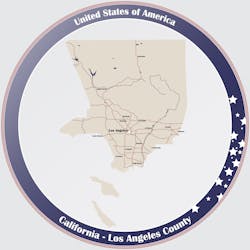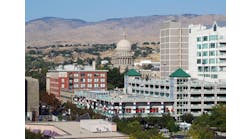Predictive Model Pinpoints COVID Risk in L.A. County
With more than 10 million residents, Los Angeles County has a larger population than 41 of the states. A UCLA team has developed a predictive model that pinpoints which populations in which neighborhoods of L.A. County are most at risk from COVID-19 and which should be prioritized for vaccines.
Their research, published in the International Journal of Environmental Health, describes the model that maps the county neighborhood-by-neighborhood, based on four indicators known to increase an individual’s vulnerability to COVID-19 infection: preexisting medical conditions, barriers to accessing health care, built-environment characteristics and socioeconomic challenges that create vulnerabilities.
“The model we have includes specific resource vulnerabilities that can guide public health officials and local leaders across the nation to harness already available local data to determine which groups in which neighborhoods are most vulnerable and how to prevent new infections,” said research author Vickie Mays, Ph.D., UCLA Fielding School of Public Health professor of health policy and management and professor of psychology in the UCLA College of Letters and Sciences, in a release explaining the research.
“When the pandemic hit, we were slowed down by a lack of science and a lack of understanding of the ways in which health disparities in the lives of some of our most vulnerable populations made their risk of COVID-19 infection even greater,” Mays explained. “We thought elderly and people in nursing homes were the most vulnerable, yet we found that lacking a number of social resources contributes to a greater likelihood of getting infected and in some instances leading to death as well.”
While many have been vaccinated, there are others still in neighborhoods and communities at risk of COVID-19 that need to be reached to fully re-open Los Angeles County, the authors said.
The research data demonstrate that neighborhoods characterized by significant clustering of racial and ethnic minorities, low-income households, and unmet social needs are still most vulnerable to COVID-19 infection, specifically areas in and around South Los Angeles and the eastern portion of the San Fernando Valley. Communities along the coast and in the northwestern part of the county, which have more white and higher-income residents, were found to be the least vulnerable.
“These same areas, along with the Palmdale-Lancaster areas, need more than just someone showing up and saying `we are here with a vaccine for you,’” Mays said. “These are also the same communities where it will take education about the vaccine, strategies that focus on bringing households together, and incentives that bring people out even to listen to why they should take the vaccine; this is especially important in working with the Black population.”
Mays, who also directs the National Institutes of Health–funded UCLA BRITE Center for Science, Research and Policy, worked with urban planner Paul Ong, Ph.D., director of the UCLA Center for Neighborhood Knowledge, to develop the indicators model, along with study co-authors Chhandara Pech and Nataly Rios Gutierrez. The maps were created by Abigail Fitzgibbon. Using data from the Fielding School's UCLA Center for Health Policy Research’s California Health Interview Survey, the U.S. Census Bureau’s American Community Survey, and the California Department of Parks and Recreation, the researchers were able to determine which racial and ethnic groups in Los Angeles County were the most vulnerable, based on their geographical residence.


